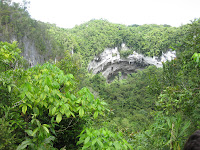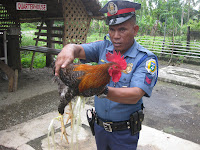
This past month, I haven't updated the blog much, but there's been plenty going on. The first couple weeks of November, we continued teaching classes at the Catholic and public high schools. One of the most meaningful moments I got while teaching this month was introducing my beaming class of 58 1st year high schoolers to the fact that humans landed on the moon. This doesn't sound like a groundbreaking task I'm sure, but I found in really humbling to be endowed with the responsibility of conveying the importance of the event. I started with the size of the Earth and the Moon, and the distance traveled by the spaceship (238,000 miles) put in terms of the distance to the closest city, Tacloban, which is 24 miles away from here. We talked about the mass of the two floating rocks, why gravity is so much less on the moon. One day I tried, with two big balls of paper and an old globe from the library, to depict the moon's revolution around earth, the monthly phases. One night, I asked students to sit outside and just look at the moon, record the phase, and think about what they saw. Then, on one of the final days of the moon talk, I told the students about Neil Armstrong, and how he walked out of the ship, and uttered the famous line 'One small step for man, one giant leap for mankind..' I got students to stand up, come to the front, and one by one, I surrounded them with my arms, made a big "sssshhhhh" sound (an aweful imitation of what I imagine a spaceship door to sound like) while I spread my arms, the students then took one step, and slowly read from the chalkboard the unforgettable saying.
I honestly don't know if the students got it, if they understood what Neil Armstrong said, or why we wanted to fly up there in the first place. The students are coming from a background where it is hard for them to imagine any type of innovation like that. Without the historic context of Sputnik, or JFK, or the race to be the first, I haven't much Idea of how important they perceive the event to be. I do know, however, that I finally got it. It's one of those things that I've read and heard and seen, but only now do I get a feeling for what a huge time that was for everyone wh
It gave me so much pride to tell these students that man is capable of such a feat, and that even the sky isn't the limit anymore. I have a pretty good idea now of the obstacles, financial, social, psychological, that face the studetns. It gets really discouraging sometimes to think about the lack of resources that were, are, and will be here for them, and what that means for these students' futures. But I was reminded while making spaceship sounds and lumbering around as if in a spacesuit i n front of 58 Filipino students that really anything is possible.
n front of 58 Filipino students that really anything is possible.















































